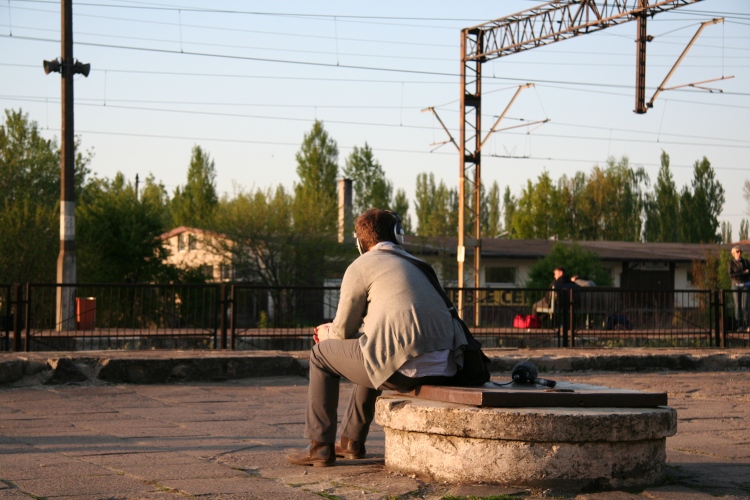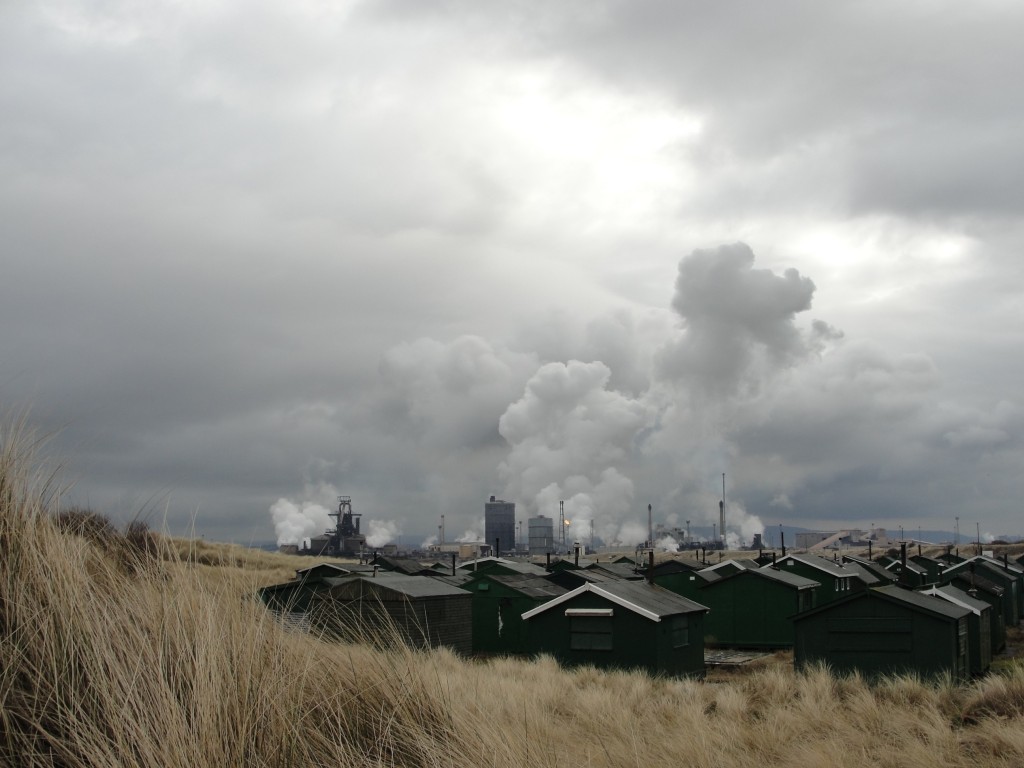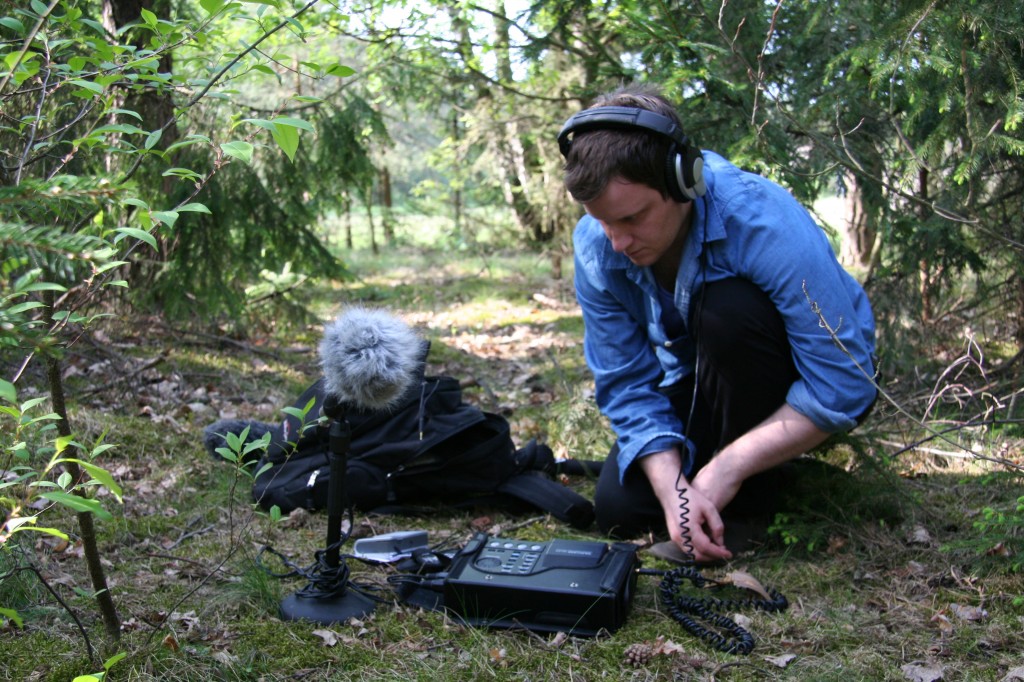Interview with Mark Peter Wright
Mark Peter Wright is an artist whose practice seeks to illuminate understandings of listening and place. Through delicate intersection of sound, image, objects and text his work often encounters themes relating to nature, industry and site-specific histories of migration and abandonment. Such pre occupations have inspired an acclaimed body of work that brings to debate both political and cultural aesthetics of subjectivity and place. He has exhibited, broadcast and published works across a variety of international venues, festivals, labels and media. In 2009 he received the British Composer of the Year Award [Sonic Arts] for his work A Quiet Reverie [2008]. In 2010 he was nominated for a Prix Ars Electronica award in Digital Musics & Sound Art. He is also the founder of Ear Room, an online resource co-published by Sound & Music. Wright [b. 1979, UK] lives and works in London and is represented by IMT Gallery.
This interview is based on ideas inspired by RE:Walden, a collaboration between theatre director Jean-François Peyret, Thierry Coduys and a few others…
Le Hub would like to thank Mark warmly for the sympathy, the time and the energy he put into the construction of this interview.
Recording Where Once We Walked | Photo by Chris Atkins
Where Once We Walked | Preview Excerpts by Mark Peter Wright
1- Research VS Practice – Facts VS Imaginary – Composition VS Field Recording
AB. In a previous interview you speak about how research and practice blends in your work to become almost the same thing. This to me can be illustrated by the idea of ‘soundwalk’, a major constituent of your creative process. Soundwalking brings together ‘reading a place’ (moving innocently from one sound/view to another), ‘reading beyond the place’ (constructing a reflection and imaginary based on the landscape its rhythm, like ideas extending behind words) and ‘writing’ (by already organising sounds into a ‘narrative’: environmental composition). Do you use soundwalking as part of your process when first listening to a place or site?
MPW. I find in the beginning at least, more often than not, working and listening to a specific place is a process full of contradictions, mixed histories, myths and misinterpretation. Finding a ‘way in’ can be difficult so in this respect soundwalking is a great way of intuitively connecting all these underlying ambiguities. For me, recently at least, sitting or standing still is my initial way in. It’s almost like a kind of endurance test, to stand in one place, to listen and wait. At some point you cross a threshold without being aware of it and your completely lost – I like that area of not knowing. There’s a quote from Annie Dillard that I find useful with regard to this:
‘You empty yourself and wait, listening. After a time you hear it: there is nothing there. There is nothing but those things only, those created objects, discrete, growing or holding, or swaying, being rained on or raining, held, flooding or ebbing, standing or spread. You feel the world’s word as a tension, a hum, a single chorused note everywhere the same’.
AB. Would you say that you construct fiction from findings (objects, photographs, sounds)? Or would you rather say that you explore sites guided by your imagination? How do facts and imaginary elements articulate in your work?
MPW. I would say that I explore specific sites with a mixture of learned history and intuitive rambling. There’s always an overlap between the two (fact/fiction) and that’s where I like my work to operate, in the overlaps. A recent publication, Inanimate Life deals with this in some way. The sounds presented are straightforward, simple recordings of wind resonating on various materials. They are however quite microscopic, in ways we can’t really hear in everyday life, but they do exist, they’re just not in our normal range of perception. Sound has the ability to be a deeply fictitious medium; it has the uncanny ability to trick you constantly. So this blurring, between what’s real and not is really inherent in the medium – all I’m attempting to do is listen and tease it out a little.
South Gare, Redcar | a site of ongoing research.
AB. You work with sites that have often encountered some trauma, be it historical, political or ecological. What is it about these types of places that interest you?
MPW. I’m interested in how a traumatic past, present or future can impact upon a place and manifest itself now, today on a landscape – How do we begin to listen to this turbulence? How does it resonate today – politically, socially, subjectively? Fundamentally the sites I like to work with, those with loaded histories, immediately speak beyond the location itself and I’m interested in testing sounds ability to do something similar, to spill and connect beyond its form.
AB. How is your listening experience on site different from the experience you are trying to bring to your audience?
MPW. That’s an interesting one. Practically speaking working on site can be a mixture of the sublime and the ridiculous. There are moments of utter despair, falling over your own cables, not setting up equipment in the right way, always missing the thing that you think you heard. On the other hand you have moments that are almost transcendent, where you feel somehow a part of some inexpressible truth. I suppose out of the two I’d like to present an audience with an expression of the inexpressible – but that’s a tall order! I’m currently working on a project commissioned by Pacitti Company called On Landgaurd Point where I’m recording within and around Landguard Fort, a grade 1 listed heritage site. I’m creating an alternative audio guide for the site so visitors will be able to roam certain parts of the Fort with a set of headphones and be immersed in both the auditory work and the physical site. For me this combination is the perfect blend of my own listening and how I’d like an audience to engage with that, the site and their own histories.
AB. What difference do you make between ‘critical listening’, ‘subjective listening’ and what could be called ‘imagined listening’?
MPW. I interviewed Hildegard Westerkamp recently for an online publication I run called Ear Room; she made a comment that really struck me. I asked her about how she navigates between the objective and subjective ear whilst recording and she said ‘I don’t believe there is such a thing as an objective ear.’ It’s such a simple statement but it’s so true. I’d say critical listening implies a broader acknowledgment beyond the scope of the ‘I’ – both are as important as each other.
Recording | Where Once we Walked
2- Retreat – Nature – Society – Observatory
AB. Henry Thoreau wanted to take a bit of distance from the city to reflect on his contemporaries, while remaining close enough in order to observe them. He would write in the woods while going to the market everyday or invite guests for dinner. A main part of your work takes place away from human activity, on a retreat, (mal de mer, a quiet reverie). How much of your work is an escape from city, contemporary times, industrial sounds, and technology?
MPW. I did it the other way around, I wanted some distance from the country so I moved to London – it’s helped my work enormously, to look at the same picture from a different angle. I certainly don’t see my work as a retreat or escape. The places I like to work with are often (not always) removed from a busy, city type environment, but for me at least they are places to confront and reflect over the human condition. I love the end scene from Pasolini’s film Theorem , you could say the character is retreating from the city but it sure doesn’t look pleasant where he’s going. It’s that expression of existential angst, that transformation and confrontation of the unknown primordial soup that lingers in us all I’m intrigued by. Far from retreating I’d say the work is really about facing all theses contemporary fears and somehow grappling with them.
AB. Do you think you can only find a sense of solitude away from the industrial/human activity of a city?
MPW. One of the most solitary listening experiences I’ve had was in London as helicopters and police sirens wailed all above me. I was sat under a pier along the Thames and the acoustic under there was so amorphous and consuming– I felt completely alone even though there were thousands of people and industrial activities all around me. Again, I think it just highlights that a lot of my work is about the condition of the human psyche as much as it is about a straightforward engagement with history, sound and place. Solitude is clearly a complex issue. In the American literary traditions you mention you see it manifest in people like Thoreau, Kerouac even through to Christopher McCandless – as much as it is about escape, they’re going to these physical and mental places to confront something. Thoreau himself puts it well by bringing to debate the bigger picture of the universe and the limits of technology…
‘This whole earth which we inhabit is but a point in space. How far apart, think you, dwell the two most distant inhabitants of yonder star, the breadth of whose disk cannot be appreciated by our instruments’?
AB. A project such as Vent engages with a 100% industrial sound. One may see on the one hand an ecologic action: bringing to an audience the awareness of an ‘imperialist’ sound that dominates London, squashing any other sound in its vicinity. On the other hand, you are sharing the variety and the beauty of the sound of vents and your fascination for them.
MPW. I recently gave a talk that touched upon these issues. Vent is a departure in some ways from my other works as it does involve 100% urban sound. It really came out of working with Peter Cusack on his Favourite Sounds project. I was in Manchester recording huge lists of people’s favourite sounds and it had a deep impact upon me in terms of how celebrated chaos, noise and industry were in a city. I grew up around the countryside and most probably carried with me a naïve inherent assumption that as R Murray Schafer would put it, a ‘hi-fi’ (rural) soundscape was somehow a more valid one. Obviously this is not right but it took a while for me to realise as it was in my blood from an early age. So Vent is really a way of wrestling with my own conflicts between urban and rural sound and eventually celebrating aspects within urban life that are often overlooked or under appreciated. There’s been a great amount of ventilation recordings documented by fantastic people throughout the world so I love the idea of a ‘global vent community’ combining forces to map these fantastic noise-makers.
AB. How much of your work consists of creating a distance, a viewpoint to look at contemporary society?
MPW. I’m very interested in playing with distance, particularly contextual distance and how much information is given to a listener other than the core piece of work. I like the idea of working within a sliding scale, between two opposite points of context and isolation – moving between the two, hovering over ambiguous territories and thresholds is an exciting place to listen. I think when you deal with the past your always dealing with a distance that naturally builds – as I’m speaking these words, we’re moving further away from where we began. How do we get back to the beginning? What’s great about recording technologies is that you have the ability to capture moments and preserve them in time. As I mentioned earlier, hopefully my work can engage with specific past histories but at the same time reflect and meditate over the hinterlands of our own psychology as well.
3- Technology – Reduction – Materials – Input – Output.
The experience of Thoreau was based on ‘reduction’: reducing his material needs to minimum to study human relation to technique. JF Peyret compares Thoreau’s wooden shed with a machine, a typewriter. Thoreau enters the shed with ideas which exit the shed in the form of sentences.
A.B.What equipment do you use? Could you create work without it? Are you an augmented listener or more the naked type?
MPW. I’m not a technical man in any way shape or form; I can’t even put a shelf up around the house without causing some lasting damage to the walls. So for me it’s always ideas and instinct first, then a process of finding the relevant technological/form based solution. More and more I’m working on projects that move away from audio recording technology to some extent. One work titled Listening Acts is a series of photographic images that document extended periods of listening. It’s about the physical ways in which we listen to the world around us and how we, and a place can impact and leave traces upon each other. Another project is called Notes on Everyday Listening – I’m looking to publish this in the next eighteen months or so. It’s an exercise in remembering sound and involves text only. So yes, reduction is very much a big part in everything I do, particularly in terms of process and getting to the end result. Ideally I want to boil research, practice, forms and technology into some fundamental experience that can be delivered in one potent message – that’s another tall order!
For more details visit Mark Peter Wright’s website: www.markpeterwright.com and Ear room: www.earroom.wordpress.com
Published and broadcast work by Mark Peter Wright: Published/Broadcast Works [Excerpts] by Mark Peter Wright
Antoine Bertin for le hub.


